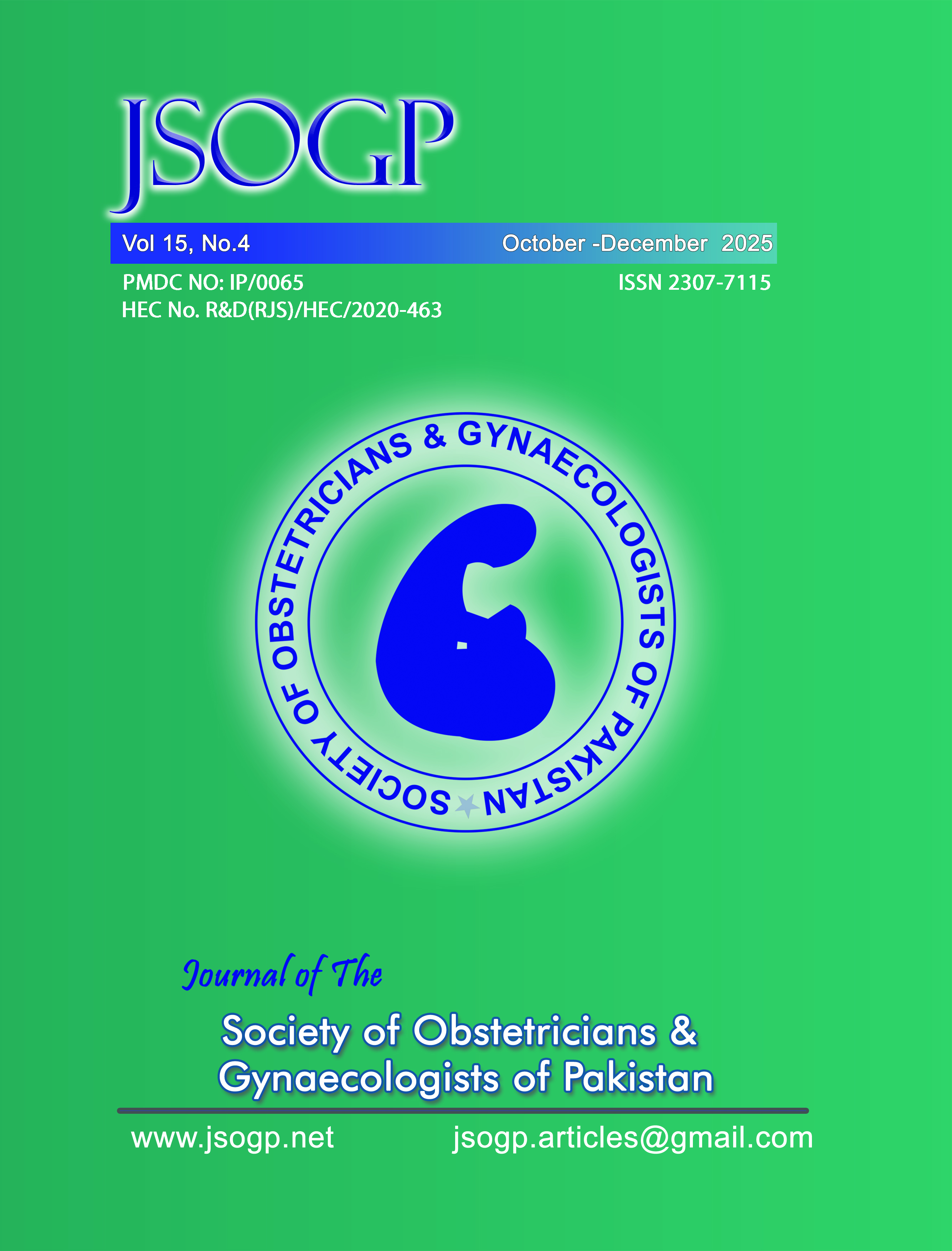Effectiveness of Prophylactic Intravenous Tranexamic Acid in Preventing Postpartum Hemorrhage After Vaginal Delivery: A Quasi-Experimental Study
Abstract
Objective: To evaluate the effectiveness of prophylactic TXA in reducing PPH among women undergoing vaginal delivery
Methodology: This quasi-experimental research included 192 women undergoing vaginal delivery from Sir Ganga Ram Hospital, Lahore, during 6th March 2023 to 28th February 2024. Women in TXA group (n=96) received intravenous TXA 100 mg/mL, and women in SOC group (n=96) received only standard of care (SOC). Gravimetric method was used to estimate blood loss. Independent sample t-test employed to compare blood loss between groups.
Results: Baseline means of age (p-value 0.822), BMI (p-value 0.757), age categories (p-value 0.826), BMI classes (p-value 0.626) and parity (p-value 0.688) were similar in both groups. PPH immediately after delivery of placenta (323.59 ± 49.91 vs. 424.88 ± 41.28 ml; p-value <0.001), and up to 6-hours (70.14±6.54 ml vs. 104.68±8.53 ml; p-value <0.001) in TXA group was significantly lesser than SOC group. Requirement of blood transfusion (3.1% vs. 10.4%; p-value 0.04) in TXA group was significantly lower than SOC group. However, allergic reactions (8.3% vs. 0.0%; p-value 0.007) were only observed in TXA group. Other side effects including nausea, vomiting and diarrhoea were also higher in TXA group, but the difference remained statistically insignificant.
Conclusion: Prophylactic administration of intravenous tranexamic acid significantly reduced postpartum blood loss both immediately after placental delivery and within the first six hours following vaginal delivery.
Keywords: Pregnancy, Postpartum Hemorrhage, Postpartum Period, Placenta, Tranexamic Acid
Copyright (c) 2025 Journal of The Society of Obstetricians and Gynaecologists of Pakistan

This work is licensed under a Creative Commons Attribution-NonCommercial 4.0 International License.

